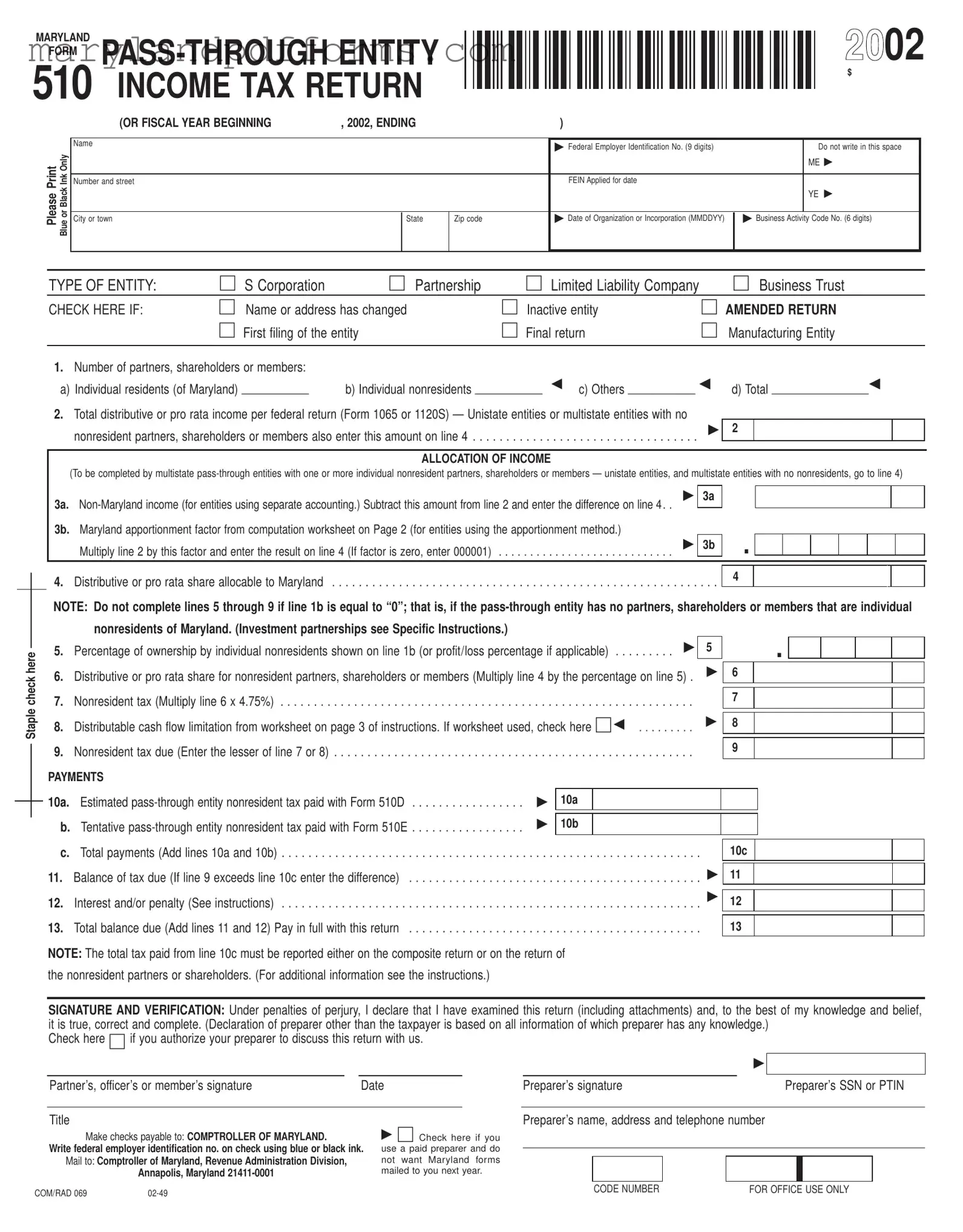The Maryland Form 510 is an income tax return specifically designed for pass-through entities, such as S Corporations, Partnerships, Limited Liability Companies, and Business Trusts. This form is used to report income, deductions, and tax liabilities for these entities operating in Maryland. It allows for the distribution of income to partners, shareholders, or members, and ensures compliance with state tax laws.
Any pass-through entity that has partners, shareholders, or members, including individual nonresidents of Maryland, must file this form. This includes entities that are either based in Maryland or have income sourced from Maryland. If the entity has no nonresident partners, shareholders, or members, certain sections of the form may not need to be completed.
To complete the Form 510, the following information is typically required:
-
Name and Federal Employer Identification Number (FEIN) of the entity.
-
Address and business activity code.
-
Number of partners, shareholders, or members, including residents and nonresidents.
-
Total distributive or pro rata income as reported on federal returns (Form 1065 or 1120S).
-
Details on income allocation, especially for multistate entities.
Additional information may include payment details, tax due, and signatures for verification.
The Maryland Form 510 is generally due on the 15th day of the fourth month following the end of the entity's tax year. For entities operating on a calendar year, this means the form is due by April 15. If the due date falls on a weekend or holiday, the deadline is extended to the next business day. Extensions may be available, but they must be requested in advance.
Tax for nonresident partners, shareholders, or members is calculated based on their distributive or pro rata share of the entity's income allocable to Maryland. This amount is then multiplied by the nonresident tax rate of 4.75%. It's important to ensure accurate reporting to avoid penalties or interest on underpayments.
Completed Maryland Form 510 should be mailed to the Comptroller of Maryland, Revenue Administration Division, at Annapolis, Maryland 21411-0001. If using a paid preparer, ensure that the preparer's information is included on the form. Payments should be made out to the Comptroller of Maryland, with the FEIN noted on the check.
